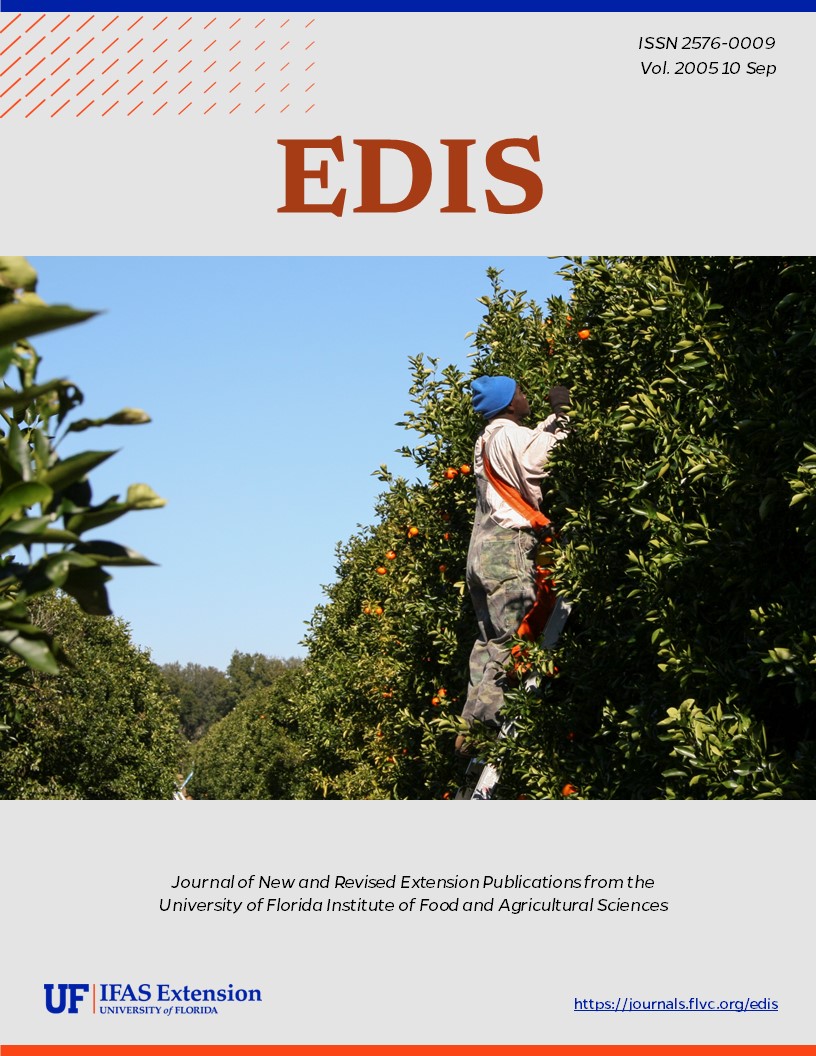Abstract
Greasy spot is a disease that's frequently found in tropical and semitropical regions where citrus cultivars are grown. The disease is caused by Mycosphaerella citri. Symptoms appear as yellow to dark brown to black lesions occurring first on the underside of mature citrus leaves (Fig. 1). As the lesions develop on the underside of the leaves, they become darker and a corresponding chlorotic spot will appear on the upper leaf surface. These yellow (chlorotic) spots occur when infected cells fail to develop chlorophyll. Lesions are more yellowish and diffuse on lemons and grapefruit and more raised and darker on tangerines. Affected leaves fall prematurely from the tree during the fall and winter resulting in reduced tree vigor and yield. Greasy spot also infects the fruit of grapefruit trees producing rind blotch. This document is HS-1016, one of a series of the Horticultural Sciences Department, UF/IFAS Extension. Original publication date May 2005.
HS-1016/HS263: Field Identification and Management of Greasy Spot Disease (ufl.edu)

